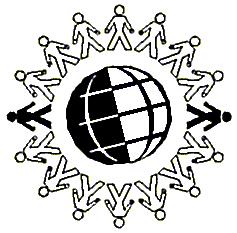The Village

6 billions players
(or more)
Proposed by Jérôme Chevrolet
and Franck
Chabot
The Village |
 |
A game for 6 billions players (or more)
Proposed by Jérôme Chevrolet |
We all know lots of persons who are themselves involved in different groups and communities, and so on. The game is based upon the assumption that, thanks to 7 other people, each of us know any living human being on this Earth. That is to say we know someone who knows someone who knows someone who knows someone who knows someone who knows someone who knows someone who knows any given Human being.
The idea of the game is to check this assumption.
Winning the game means winning more rounds than the other players.
The winner of a round is the first player to find the link (up to 7 people) to the person she/he has been given.
1 During asynchronous communications people don't communicate with each other at the same time. It's for instance: mail, fax, e-mail, sea bottles, travelling pigeons. On the opposite, during synchronous communication people do communicate at the same time. It's for instance: meeting, phone, smoke signs, TV duplex.
| Index des jeux Accueil | Contact, questions, remarques : © franck@no-reality.org |